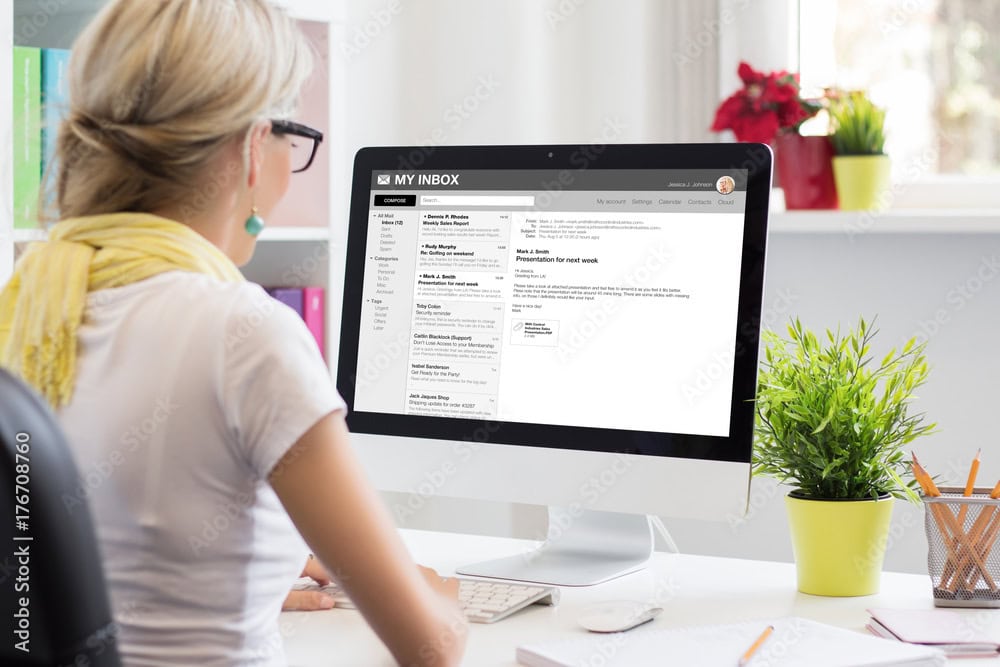To some people sending email newsletters sounds like an old-fashioned marketing technique, compared to a shiny social media account. But email marketing still has plenty of benefits.
Three key benefits of email marketing
1. You are talking directly to your customers
If someone has chosen to opt in to your email newsletter, they are choosing to let you directly into their inbox which gives you the chance to talk directly to them.
2. You aren’t at the whim of an algorithm
Your emails go direct to people’s inboxes and the only variable you are at risk of is them deciding not to open it. You aren’t at risk of algorithms not even showing people your posts or changing your account like you are on social media.
3. You can personalise your marketing
Most email software allows you to personalise emails with peoples’ names. Email segmentation allows you to split your audience and create targeted emails to different groups. This makes your marketing more effective than a general message.
Email marketing can be a potent element of your overall digital marketing strategy, but you still need to think carefully about when you are sending your newsletters and what’s going in them.
How often should you send your email newsletter and when?
There’s no real magic answer to this, although plenty of studies claim to reveal the exact day and time you should hit send. Studies can show you common trends. For example:
Mondays and Friday afternoons tend to do less well when it comes to opening emails – maybe because people are either too busy getting into their workweek or already thinking about the weekend.
People are likely to open marketing emails mid-morning – maybe after they’ve covered all their actual work emails, and then often in the evenings.
The times for highest open rates seem to be different on different days of the week.
In reality how often you send your newsletter and when you send it will be very personal to your business and your audience base. Here are some things to think about when deciding when and how often to get in touch.

When is your audience likely to be in their inbox?
This is one of the most crucial things to consider. If you can send your email so it arrives in a person’s inbox when they are already in there, they are more likely to open and read it straight away. If it arrives when they are away doing other things, you run the risk that it will simply sit there. They might open it when they get back, or later on, but they might skip over it amongst everything that has arrived since then.
How much time can you spend on your email marketing?
This is especially important if you plan to DIY your email marketing. You’ll need to write the emails, and then there’s the time it takes to set them up in your chosen mail software. There’s no point telling your subscribers that you are going to show up daily or weekly if can’t commit. Better to consistently show up once a month than to promise to show up every week and keep going missing.
How much information do you have to share?
People’s inboxes are crowded so you want to give them useful stuff that they’ll want to read. If you only have a bit of fresh info to share each month, then only send a monthly email and use it to round up all of your latest news. If you have regular changing promos or need to update customers more often, then consider sending weekly, or even more frequently.
What you don’t want to do is send a daily or weekly email when you have nothing to say – that’s a sure-fire way of making people unsubscribe.
Test and adjust your email campaigns including timing
When it comes to finding out the best frequency and timing for your email newsletters, analytics are going to be your best friend.
Pick any day and time to send and then stick to it for a few months. Once you’ve done that, look at your data. What are your open rates, click through rates and unsubscribe rates? If your numbers don’t look good, try a different day or time and compare. You can repeat this process a few times until you hit on the magic combination.
Stats help you set frequency too. If you send daily emails but open rates tail off during the week, or you send a weekly email but also a monthly round-up and one does better than the other, think about adjusting your frequency.
Of course if you try a host of different days and times and you still aren’t getting traction, it’s time to also look at what you are writing in your newsletter and whether your subject lines are attention-grabbing enough.
Lastly, remember that one of the keys to email marketing is consistency, so whenever and however often you choose to send, make sure you are doing it consistently. That way people will come to expect your email in their inbox.
Want more actionable tips to improve your marketing? Check out our Digital Marketing Strategy course.


